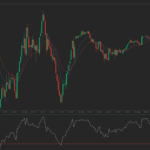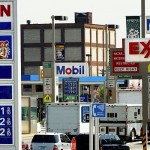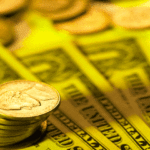Gold futures remained in the red during midday trade in Europe today, but still above the key $1 200 resistance level, as investors eye more data later this week. Meanwhile, copper futures were upbeat, supported by slightly better-than-expected data from China.
Gold futures for December delivery on the Comex in New York traded at $1 209.0 per troy ounce by 12:26 GMT, down 0.21%. Prices ranged from $1 205.0 to $1 211.6 per troy ounce. The contract dropped 0.59% on Tuesday, reaching a ten-month low at $1 204.3.
Silver for December delivery stood for 0.25% daily drop at $17.015, climbing just $0.16 above a four-year trough reached on Tuesday.
End-of-quarter technical dynamics and a strong dollar weighed heavily on the whole precious metals complex Tuesday. Gold lost about 9% this last quarter, platinum closed for a 12% loss, palladium was down 8%, while silver shed 19%.
Meanwhile, holdings at the SPDR Gold Trust, the largest exchange-traded gold-backed fund, dropped 2.5 tons to 769.86 on September 30, the lowest since December 2008.
The US dollar, meanwhile, reached a four-year peak against a basket of other major currencies yesterday at 86.33, closing the quarter for a ~8% increase, banking on upbeat US economic data, and a more hawkish Fed.
The Conference Board’s US consumer confidence index, a key gauge on US consumer sentiment, unexpectedly logged for a sizable downgrade to 86.0. Consumer sentiment is a vital indicator to consumer spending, which in turn accounts for about 80% of US GDP. The news, however, hardly impacted the US dollar, as traders are wary of big moves ahead of the more important data later this week.
ADP posted its reading on US payrolls for September today, logging new jobs at 213 000, slightly above expectations and well over the official figure of 142 000 for August. The official September report is due on Friday, while ISM will post its manufacturing and services PMI readings for the US later today and on Friday, respectively, set to log another month of massive growth for both sectors, potentially driving the dollar to a new peak.
Another significant factor in dollar valuation is the strength of the euro. The euro reached a two-year bottom against the dollar at 1.257 EUR/USD yesterday, closing the quarter for an 8% drop against the greenback. The euro turned downwards recently, as downbeat data from the Bloc pressured its currency, prompting the European Central Bank to lower its benchmark lending rate to the historic low of 0.05%, and introduce a €3tn stimulus program. Key for the euro will be Thursday’s European Central Bank (ECB) meeting, the first after the Bank went highly accommodative.
Eurozone manufacturing PMI, posted earlier today, was the latest in the string of bearish data, with the Bloc barely logging growth in the factory sector in September, while Germany posted a contraction for the first time in fifteen months.
Previously, key unemployment and CPI figures from the Eurozone were also posted. The unemployment rate was logged unchanged at 11.5%, while consumer inflation, as expected, dropped to 0.3% on an annual basis. Core CPI, however, was lower than forecast at 0.7%.
Copper
Copper contracts for December, the most-traded contract in New York, stood at $3.0315 per pound, up 0.80% for the day, though it also logged the lowest price in five months at $3.0000.
“The mood here is pretty bearish,” Bob Haberkorn, a broker at RJO Futures, said for The Wall Street Journal. “It looks like people are expecting this market to trend down to its March lows, below $3 a pound.”
Key data on China was posted this week, with both HSBC and the Chinese government seeing growth in China’s factory sector last month. However, HSBC saw disappointingly minimal growth, barely into the positive, which pressured the red metal sharply to the downside yesterday. The factory sector activities gauge is a leading indicator for copper demand, while China itself accounts for 40% of global copper demand.
Meanwhile, the four-year strong dollar also weighed heavily on the industrial metals complex.
“The dollar’s strength has worsened sentiment in the market,” said Tetsu Emori, a fund manager at Astmax Asset Management Inc. in Tokyo. Metals “were already under pressure from concern that Chinese demand is slowing.”





